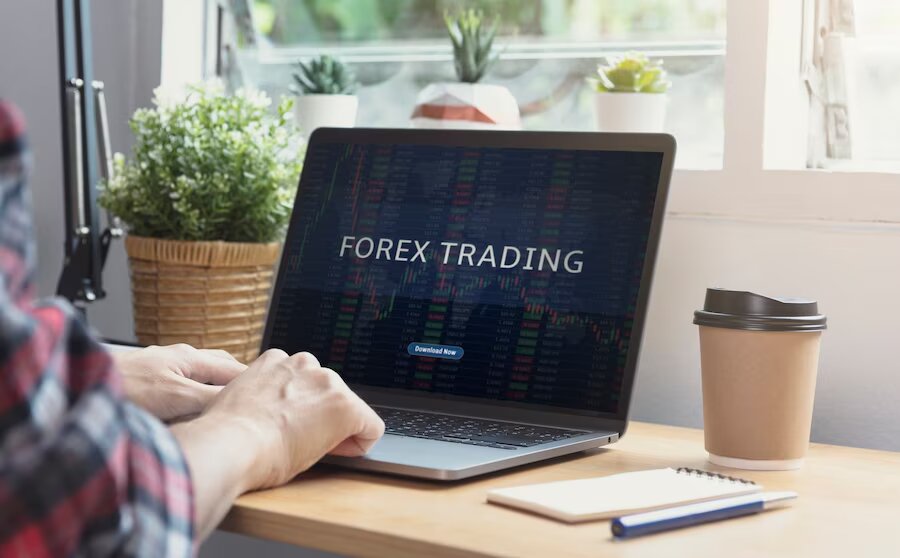Has the thought of making money by exchanging currencies ever come to your mind?
The global market has already established a branch for this.
Forex trading is known as the process of purchasing and selling different currencies with the goal to profit from the changes in their exchange values.
Participants in this open global market exchange have several currency pairs like EUR/USD, GBP/JPY, and AUD/CAD.
Although forex trading has the potential to provide significant rewards, there are also inevitable dangers that investors should take into consideration.
Volatile Currency Pairs Risks
It is essential to have a solid understanding of the possible risks and implement good risk management practices. The following are some significant dangers connected to forex trading:
Volatility
The forex market is renowned for its volatile currency pairs. Due to unexpected changes in the market, political developments, or economic events, price movements can be severe and quick.
While volatility can present profit opportunities, it also increases the risk of sudden losses.
Leverage
Forex trading commonly involves leverage, allowing traders to control more prominent positions with less capital.
While leverage amplifies potential gains, it also magnifies losses. If the market moves against a leveraged position, losses can quickly exceed the initial investment.
Careful consideration and responsible use of leverage are essential to manage this risk effectively.
Market Risk
Forex prices are influenced by multiple factors, including economic indicators, central bank decisions, geopolitical events, and market sentiment.
These factors can be unpredictable, making it challenging to accurately predict market movements.
Liquidity Risk
Even though the forex market is often highly active, there are times when it may become more volatile, especially during news releases or market gaps.
It could be challenging to complete trades at the desired prices under these conditions. This could potentially cause losses for traders.
Psychological Factors
Successful forex trading requires discipline, emotional control, and the ability to stick to a well-defined trading plan.
Traders may have psychological difficulties, including anxiety, greed, or impulsive behavior, which can result in poor decision-making and trading mistakes.
Counterparty Risk
Forex trading involves working with brokers and financial institutions.
Traders must be aware of counterparty risk, which is the risk of a broker’s financial instability or lack of integrity. Hence it is crucial to choose reputable brokers.
Risk Management
As previously mentioned, successful forex trading requires not only knowledge and skill but also effective risk management techniques.
Any trading attempt, including forex trading, must include this procedure. It involves implementing strategies and techniques to protect capital and minimize potential losses.
Setting Stop-loss Orders
A stop-loss order is a predetermined price level at which a trade will be automatically closed to limit potential losses, so the traders can define their acceptable risk level and protect their capital.
Position Sizing
Position sizing is the process of choosing the right transaction size based on the size of the trader’s account and risk tolerance.
Trading participants can control their risk exposure by choosing a predetermined percentage or fixed amount of capital for each deal.
It is generally recommended to risk a small percentage of the trading account on any given trade to avoid significant losses.
Diversification
Spreading your trading capital over several asset classes, trading tactics, and currency pairs is known as diversification.
By diversifying their holdings, traders may minimize the impact of adverse changes in just one currency pair and possibly make up for losses in other positions.
Risk-reward Ratio
The risk-reward ratio balances the possible profit and loss of a trade. Comparing the likely profits to the related hazards helps traders determine if a deal is worthwhile.
A favorable risk-reward ratio often indicates that the profit potential is greater than the likelihood of loss.
Regular Analysis and Evaluation
Continuous analysis and evaluation of trades and risk management practices are crucial.
Traders should review their trading strategies, learn from past trades and experiences, assess the effectiveness of their risk management techniques, and identify areas for improvement.
Emotion and Discipline
Maintaining discipline and managing emotions are vital aspects of risk management. Traders should stick to their trading strategy and not chase losses or get sidetracked from it.
Utilizing Risk Management Tools
There are also numerous tools to help an individual with having control over the risks that guarantee preferable results and reduce issues:
Risk Calculators
With risk calculators, traders may choose the right position size based on their risk desire, account size, and stop-loss level.
Before making a deal, traders can estimate the possible risk by entering these criteria in terms of a percentage or a monetary amount.
Economic Calendars
Economic calendars provide information on upcoming economic events, such as interest rate decisions, GDP releases, or employment reports.
By staying informed about key economic events, traders can be prepared for potential market volatility and adjust their strategies accordingly.
Trading Journals
The analysis and evaluation of trading performance are made more accessible by keeping a trading record, where traders can keep track of and review their transactions in a trading journal.
Conclusion
Finally, risk management is an essential component of forex trading that can never be overlooked.
Ultimately, traders can aim for consistent profitability and long-term trading performance by efficiently controlling risk and stepping up when most needed.
Additionals:




























